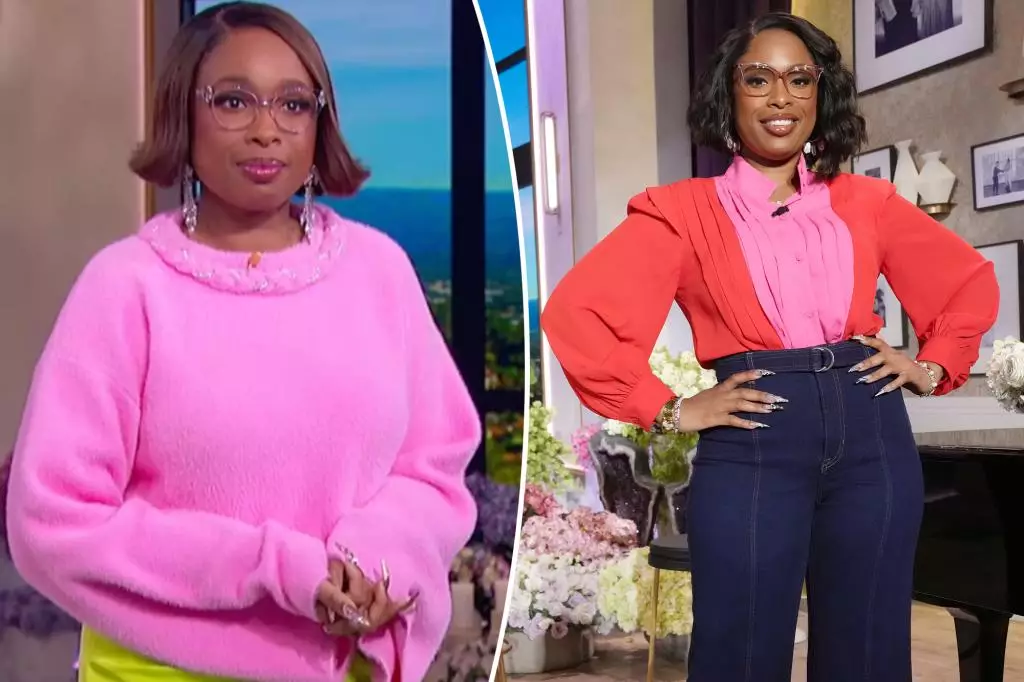In a recent segment of “The Jennifer Hudson Show,” the multi-talented Jennifer Hudson made waves with her unapologetic disdain for low-rise jeans, a staple of early 2000s fashion. With a playful tone, she conveyed to her audience that she would never be caught in such an outfit, exclaiming, “I can’t stand low-rise jeans.” Hudson’s candid remarks were more than just a personal fashion preference; they highlighted a broader cultural moment in which generational divides in style are increasingly prominent. Her assertion that low-rise jeans make her feel “like a bitter bitch” struck a chord, igniting laughter and agreement from her audience.
Hudson’s comments resonate deeply with women, especially moms, who find themselves grappling with fashion choices that don’t align with comfort or age. The overwhelming support in comments on the show’s Instagram, where fans echoed her opinions, underscores a significant cultural resistance against the re-emergence of low-rise jeans among millennials and Gen X. The popularity of high-waisted silhouettes, on the other hand, showcases a preference for style that offers both comfort and sophistication, providing a stark contrast to the low-rise trend.
The Comeback of an Unwelcome Trend
Low-rise jeans, once flaunted by fashion icons such as Britney Spears and Jennifer Lopez, are making a troubling return, largely championed by Gen Z fashion enthusiasts. This revival challenges the preferences of older generations who remember the discomfort associated with this style. The discomfort isn’t merely physical; it’s also psychological, charged with the societal pressures related to body image and societal beauty standards. Hudson, alongside other notable figures like Jessica Chastain, is vocal about her distaste, which reveals a collective yearning for a wardrobe that aligns more closely with empowerment than with trends that evoke earlier, more awkward fashion moments.
Chastain’s comments in her recent interview illustrate this sentiment perfectly. Her disdain for visible underwear, an often unavoidable aspect of low-rise jeans, encapsulates how fundamental our fashion choices are to our sense of identity and dignity. Many may find themselves wondering why the fashion industry insists on recycling trends that seem to serve very few body types or preferences, and Hudson’s vehement rejection of low-rise fits embodies that frustration perfectly.
Generational Fashion Divide
The divide between millennials and Gen Z regarding fashion is profound. While younger generations may crave the nostalgic revival of past trends, those who grew up experiencing the uncomfortable realities of these styles are pushing back. The debate around low-rise jeans speaks to larger issues of body positivity, gender expression, and the very notion of personal identity in fashion. As Hudson articulated on her show, embracing the high-waisted option serves not only as a preference but as a declaration of individual style—one that prioritizes comfort and self-love over fleeting trends.
Fashion, after all, should be about empowerment, not merely about following the latest fad. As celebrities like Hudson continue to voice their preferences, they cultivate an environment where comfort and self-expression can flourish, steering the narrative away from the often precarious nature of low-rise designs that fail to resonate with their audience. The conversation is not just about jeans; it’s a broader reflection of cultural evolution and the growing insistence on fashion choices that make us feel confident and beautiful.

